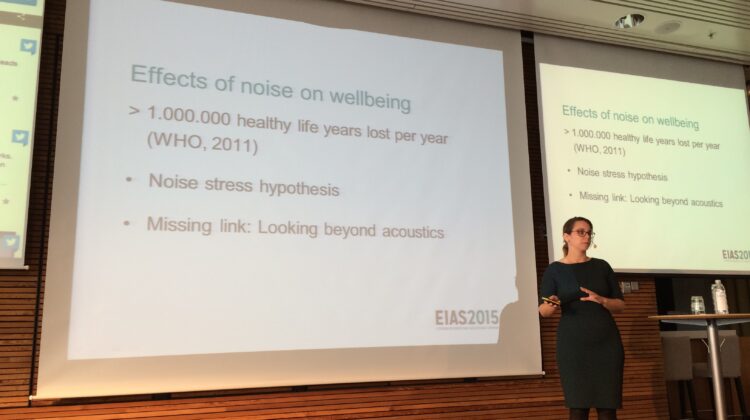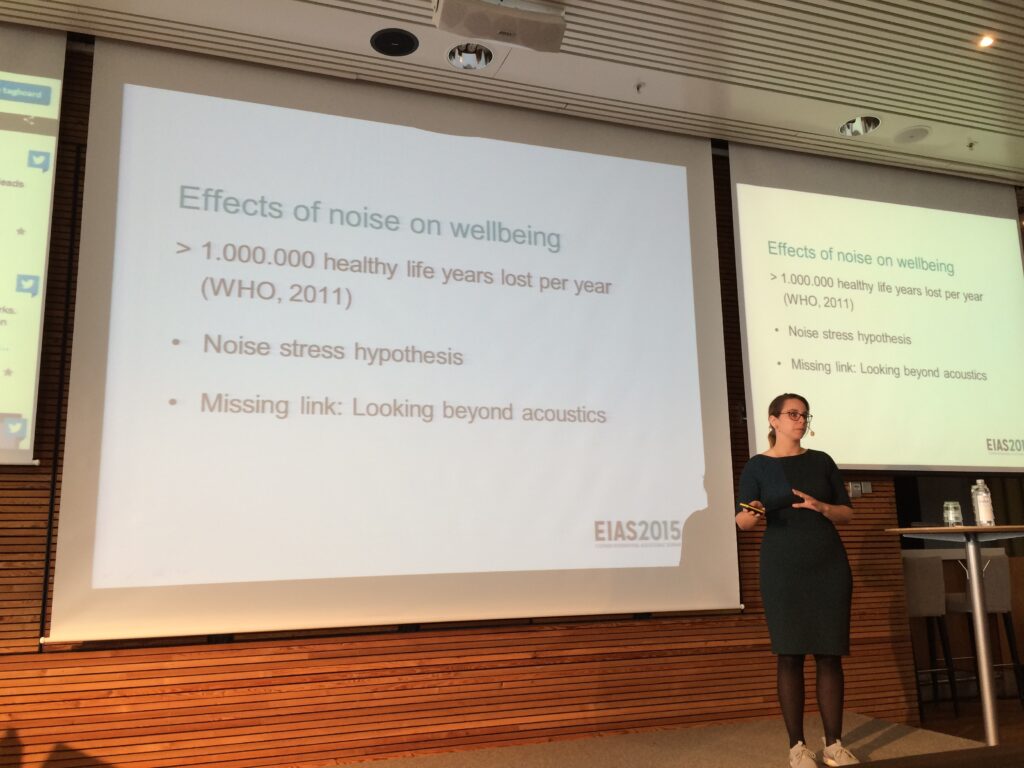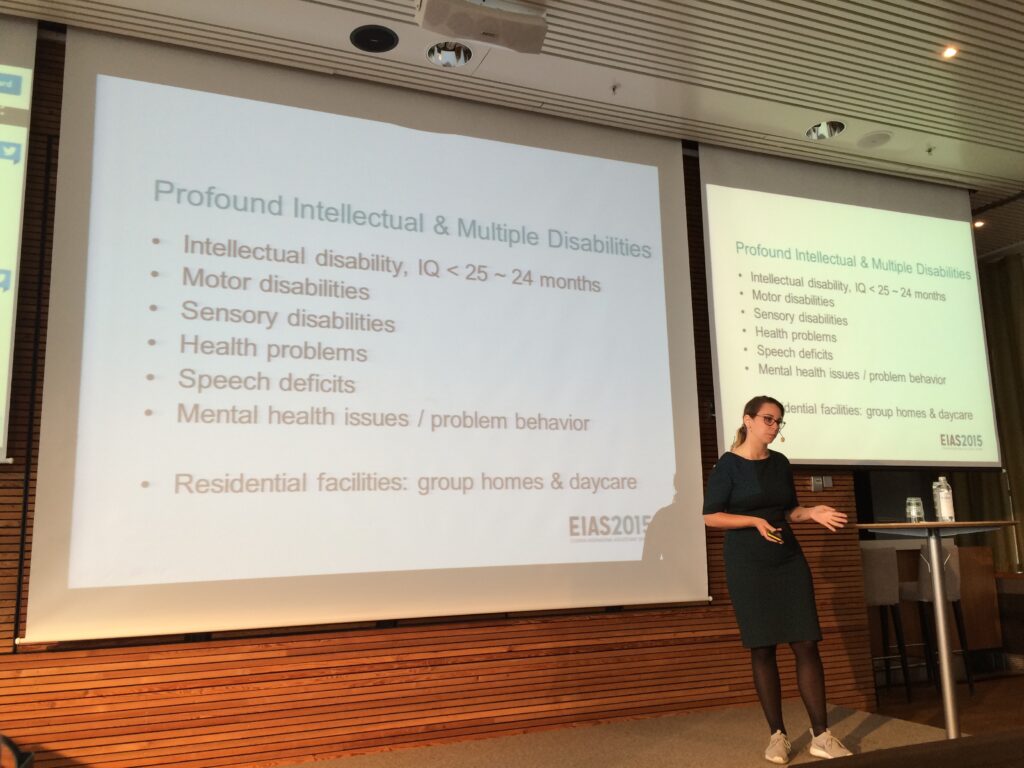
Soundscapes: Safe and Sound
Kirsten Van den Bosh spoke under the title ‘Safe and Sound’ at EIAS 2015 and even though she mentioned that it was nearly blasphemy to say “I think that acoustics are a bit overrated!” during an international acoustic conference, she might have a point.

Kirsten’s research focuses on soundscapes in special needs care and the effect of sound on people with profound intellectual and multiple disabilities. She has learned during her studies that there is actually no research in the literature about how sound affects this group of people. In this group, 30-40% have an auditory impairment and up to 85% of them have problems with their sight – this together with other disabilities.
Since there is no previous research, Kirsten has chosen to look at how these people get affected by sound and noise in general. In her EIAS presentation, she discussed the numbers from WHO saying that 1,000,000 healthy life years are lost per year because of noise. She stated that this is just in Western Europe and because of traffic noise. Therefore the real number is even bigger! In the healthcare segment, cardiovascular diseases are known to be caused by noise together with stress and sleeping problems.
Kirsten discussed why acoustics might be a bit overrated (“People are more than decibel readers”) by explaining the concept ‘Audible Safety’. Our brain is tuned in for the outdoor environment – to react to danger. We are not yet ready for the audible soundscape around us that have changed tremendously during just the last decades. She explained that we react more quickly to auditory stimuli than visual stimuli. We wake up from sound in the night, and we lose concentration because of sound. All this to avoid danger, and Kirsten concluded that “sound is annoying when you’re not in control of your own thoughts”.
Outbreak rooms with controlled soundscapes make a difference
 In her research, Kirsten found that the study participants benefitted from outbreak rooms with controlled soundscapes. In a cozy, refurbished room they were exposed to different sounds: ocean sounds, bird songs, slow ambient music, cozy marketplace – or just silence. This had a positive impact on their behavior (no physiological measurements were done – the research was based on observations) and the people were now more relaxed in any of the conditions.
In her research, Kirsten found that the study participants benefitted from outbreak rooms with controlled soundscapes. In a cozy, refurbished room they were exposed to different sounds: ocean sounds, bird songs, slow ambient music, cozy marketplace – or just silence. This had a positive impact on their behavior (no physiological measurements were done – the research was based on observations) and the people were now more relaxed in any of the conditions.
Watch the full length presentation here.
Follow Kirsten and her research on Twitter.

